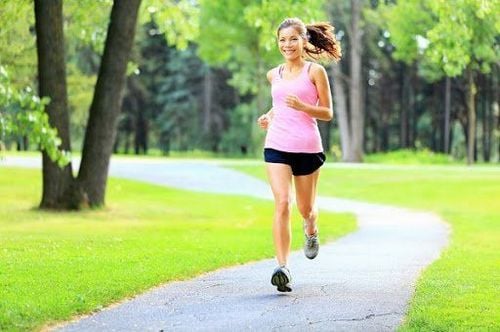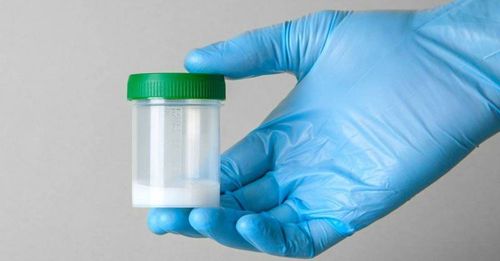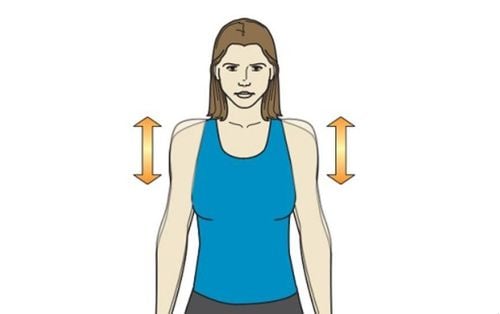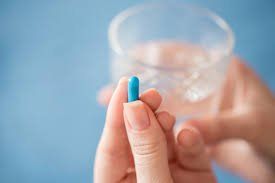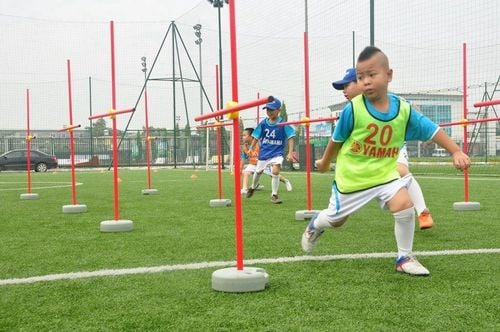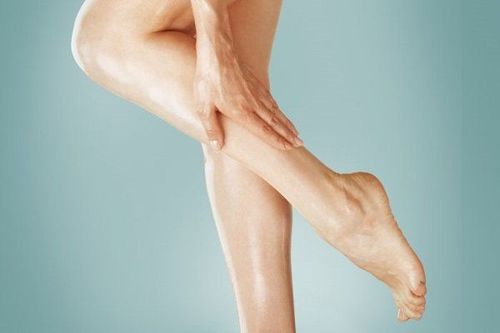When exercising, athletes' heart and breathing rates increase, delivering more oxygen from the lungs to the blood and then to the acting muscles. Determining when an increased heart rate is safe and when it is too high for exercise depends on the athlete's fitness goals, age, and current fitness level.
1. What should an athlete's heart rate be during exercise?
There is a direct, linear relationship between heart rate and exercise intensity: the more intense the exercise, the higher the heart rate.
When you exercise at the highest intensity possible, your heart reaches its maximum heart rate (HRmax), the fastest it can beat in 1 minute. However, exercising at the maximum heart rate (HRmax) all the time will not produce effective fitness results. These high intensities can rarely be sustained, negating the potential benefits of the exercise.
Exercise helps the heart work more efficiently. Typical resting heart rates can vary widely from person to person, and even within a single individual, they can vary from time to time. For adults, a resting heart rate of 60-80 beats per minute (BPM) is considered normal.
Improving aerobic exercise reduces a person's resting heart rate, as it makes the heart more efficient at pumping each beat. For example, an athlete's resting heart rate is typically around 40 beats per minute.
There is evidence that long-term exercise increases the size of the heart, specifically the left ventricle, a phenomenon known as "athlete's heart." A larger heart can pump more blood with each beat and requires fewer beats per minute to maintain blood flow throughout the body. This is a beneficial physiological adaptation that allows athletes to train at higher intensities for longer periods as well as providing endurance during competition.
How to Calculate Maximum Heart Rate:
There is considerable variation in the maximum heart rate of each person. The only true way to determine the maximum heart rate is to perform a maximal exercise test. However, the maximum heart rate can be estimated using a formula based on age. The authors of a 2001 study proposed the following modified equation to estimate the maximum heart rate: HRMax = 208 - (0.7 x Age)
This means that a 45-year-old person would have a predicted maximum heart rate of 177 BPM. Indeed, our genetics can influence our actual maximum heart rate from our predicted value. However, the maximum heart rate is not the primary determinant of the quality of exercise or athletic performance. A much more important factor is the physiological effects of the exercises that are performed. When assessing heart rate, it is important to take into account the effects of emotions such as excitement or fear, the effects of stimulants such as caffeine, and other circulating hormones such as adrenaline, all of which can increase heart rate.
2. Why do athletes have lower resting heart rates?
Athletes who compete in endurance sports tend to have lower resting heart rates than other people. Heart rate is measured in beats per minute (bpm). A person's resting heart rate is best measured when they are sitting or lying down and their body is at rest. The average resting heart rate for a non-athlete adult ranges from 60 to 80 beats per minute. However, some athletes have much lower resting heart rates, as low as 30 to 40 beats per minute. For athletes, especially those who compete in endurance sports or who exercise regularly, a lower resting heart rate is usually not a concern unless it makes them feel dizzy, fatigued, or sick. Conversely, a lower resting heart rate indicates your impressive endurance.
2.1 Resting Heart Rate of an Athlete
An athlete's resting heart rate can be considered low compared to a normal person. A young, healthy athlete may have a resting heart rate ranging from 30 to 40 beats per minute. This can be explained by the fact that exercise strengthens the heart muscle. It allows the heart to pump a larger volume of blood in each heartbeat. As a result, a greater amount of oxygen is delivered to the body's organs. This means that the heart needs to beat fewer times per minute than a person who is not physically active. However, an athlete's heart rate can increase from 180 beats per minute to 200 beats per minute during training or competition.
Resting heart rate depends on many factors and varies from person to person, even between athletes. Some factors that can affect resting heart rate include:
- Age;
- Type of exercise;
- Intensity of physical activity;
- Air temperature (on hot or humid days, heart rate may increase);
- Personal emotions (stress, anxiety and excitement can increase heart rate);
- Use of certain medications (beta blockers can slow the heart rate, while some thyroid medications can increase the heart rate).
2.2 What is considered too low a resting heart rate for athletes?
A resting heart rate is usually only considered too low when accompanied by other symptoms. These may include fatigue, dizziness, or weakness. Such symptoms may be indicative of other health problems. In this case, athletes will be asked to seek medical attention.
2.3 Athletic Heart Syndrome
Athlete heart syndrome is a condition that involves the heart but is usually harmless. It usually occurs in people who exercise for more than an hour a day. Athletes with a resting heart rate of 35 to 50 beats per minute may have an arrhythmia, or irregular heartbeat. This may show up as an abnormality on an electrocardiogram (ECG or EKG). Usually, athletic heart syndrome does not need to be diagnosed because it does not cause any health problems. But always let your doctor know if you feel:
Chest pain;
Noticing that your heart rate seems irregular when measured;
Fainting during exercise.
Sometimes athletes collapse due to heart problems. However, it is usually due to an underlying condition such as congenital heart disease, not exercise-induced heart syndrome. New research suggests that athletes with low resting heart rates may develop irregular heart rates later in life. Another study found that athletes who participate in lifelong endurance sports have a higher rate of having an electronic pacemaker implanted later in life. Research is ongoing to determine the long-term effects of endurance training. Researchers do not recommend any changes to your exercise routine at this time, and you should see your doctor if you are concerned about your low heart rate.
2.4 How to Determine The Ideal Resting Heart Rate
Well-trained athletes can expect to have a resting heart rate of 30 to 40 beats per minute. But everyone’s heart rate is different. There is no “ideal” resting heart rate, although a lower resting heart rate may mean you’re in a better health condition. You can measure your resting heart rate at home. Track your resting heart rate by checking your pulse in the morning. Gently press the tips of your index and middle fingers against the side of your wrist, just below your thumb. Count the beats for one minute (or count for 30 seconds and multiply by 2, or count for 10 seconds and multiply by 6).
2.5 How to Determine The Ideal Exercise Heart Rate
Some athletes prefer to train at a target heart rate. This is based on their intensity level relative to their maximum heart rate. A person's maximum heart rate is considered the highest level the heart can sustain during cardiovascular exercise. To estimate your maximum heart rate, use 220 to subtract your current age. Note that this is just an estimate. Most athletes train at 50 to 70 percent of their maximum heart rate. For example, if an athlete's maximum heart rate is 180 beats per minute, their target training zone would be between 90 and 126 beats per minute. Additionally, athletes who prefer to train at a target heart rate often use a heart rate monitor to track their workouts.
2.6 When to stop exercising
Having your heart rate rise to or above your maximum heart rate for a long period can be dangerous to your health. Stop exercising immediately if you feel fatigued, dizzy, lightheaded, etc.
Athletes often have lower resting heart rates than other people. If you exercise regularly and moderately, your resting heart rate may be lower than other people. This may not be bad. A low resting heart rate means that your heart needs fewer beats to pump the same amount of blood throughout your body. It is important to stop exercising and seek medical help if you experience dizziness, chest pain, or fainting while exercising. You should also see a doctor if you suspect your low heart rate is accompanied by other symptoms such as fatigue or dizziness. Doctors can evaluate your heart to confirm whether you can continue exercising or if you need to change your method and intensity to be more suitable.
Please dial HOTLINE for more information or register for an appointment HERE. Download MyVinmec app to make appointments faster and to manage your bookings easily.
Reference source: healthline.com




